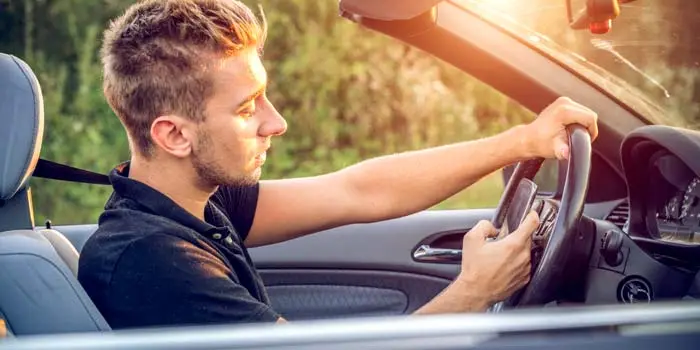Teens and 5 Big Driving Mistakes They Make


Obtaining a driver’s license or learners permit for teens is the ultimate rite of passage, but did you know that motor vehicle accidents are the leading cause of death for teenagers? According to the CDC, in 2019, almost 2,400 teens in the United States aged 13–19 were killed and about 258,000 were treated in emergency departments for injuries suffered in motor vehicle crashes. The Department of Transportation defines distracted driving as any activity that diverts a person’s attention away from the primary task of driving. This includes:
Currently, 47 states and the District of Columbia have laws banning texting and driving. Distractions to driving include more than just talking and texting now. Teen drivers are on Snapchat, Facebook, Instagram, Twitter, Google Maps, Spotify, YouTube, and other platforms. Encourage your young driver to practice safe driving habits and vow to avoid distractions while behind the wheel.
Distracted Driving: Stay Safe on the Road
Tip - Leave Early. With rush hours, lunch breaks, and more, traffic can be stressful for any driver, especially teens. To counter this, build extra time into your commute for congestion, traffic, and any other delays. This way, teens won’t be tempted to speed or disobey traffic laws in an attempt to “catch-up” after being delayed. If possible, reroute your commute to avoid neighborhoods and school zones.
Tip - Slow Down. Neighborhood and school zone speed limits are reduced for a reason. Be aware of your surroundings and the times that are most likely to be active with pedestrians.
Tip - Stop Means Stop. It can be all too easy to roll through a stop sign, especially if you're in a hurry. Make sure you come to a complete stop, check carefully for children on sidewalks and in crosswalks before proceeding.
Tip – Reverse Carefully. Backing up or going in reverse can be challenging and intimidating for anyone, especially for teens. Even with rear-view cameras and sensors, every vehicle has blind spots. Make sure your teen checks for children on the sidewalk, driveway, and around the vehicle before slowly backing up.
Tip - Watch for Bicycles. Vehicles and bicycles do not mix well, especially children on bikes who are often inexperienced, unsteady, and unpredictable. Make sure you slow down and allow three feet or more of passing distance between your vehicle and the bicyclist.
Poor driving conditions are an important factor in teen driving. Experts suggest allowing your teen to drive under your supervision in rain, snow, and heavy traffic conditions, allowing them to see how the vehicle will react. Bad weather usually means poor driving conditions, and these elements can challenge even the most experienced drivers.
Fog. Make sure your teen uses his/her low-beam lights in fog. Low beams help increase the visibility without causing a reflection off the fog. It might be necessary to use the windshield defrosters and open the windows.
Snow and Sleet. If your teen driver has no other choice but to drive in winter weather, advise them to keep a clear windshield and to drive slowly. It’s important to avoid bridges and overpasses because they can become icy and cause a vehicle to slide.
Floods. Six inches of water is enough to cause a vehicle to float off the ground, so avoiding flood waters is the only way to stay safe. If your teen driver ends up in flood waters, tell them to abandon the vehicle and immediately seek higher ground.
Before tossing the keys to your newly-licensed driver, it’s important to stress the importance of safety. Allow your teen to get familiar with the family car. Gradually introduce them to driving scenarios – braking, making turns, intersections, driveways, navigating a large parking lot, and more.
Remain Calm. When working with your teen on their driving skills, remember to remain calm. Raising your voice can cause your child to become tense and therefore unable to focus on the lesson.
Model the Behavior. Teens tend to follow the crowd, so it’s important parents model safe driving behaviors. What you do, your teen is going to do. As easy as it is to pull out your phone, mute it, and put it in the glovebox until you arrive safely at your destination. That way no one is distracted by it going off.
Changing Technology. Today, automakers are implementing technology letting parents keep tabs on teen drivers and their behavior behind the wheel. Examples include: safety features like stability control and lane-departure warnings cannot be disabled; if the front seat belts aren’t being used, the audio won’t work. A report card is then available showing how the teen drove for parents to help coach the teen on safe driving habits.
It can be stressful to hand over the keys to your teen driver. Instilling safe driving habits and stressing the importance of avoiding distractions while behind the wheel, can help lead your young driver in the right direction. For added peace of mind, connect with your local Farm Bureau agent to learn more about the Farm Bureau Young Driver Safety Program.